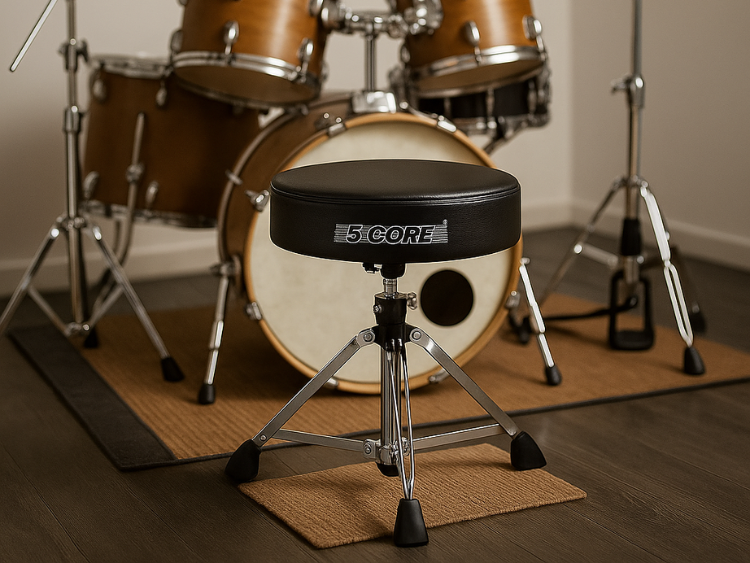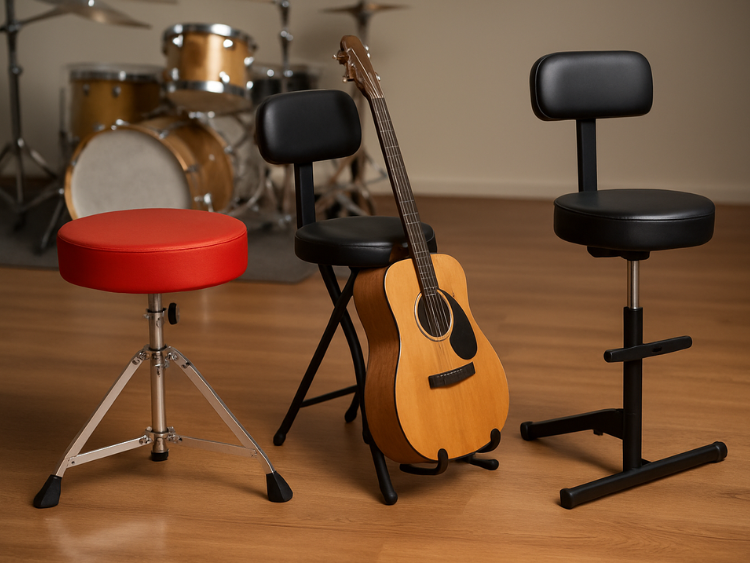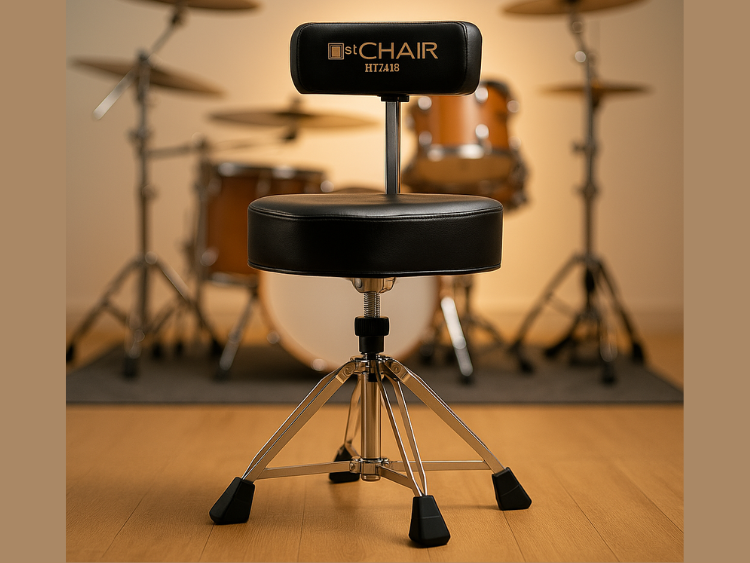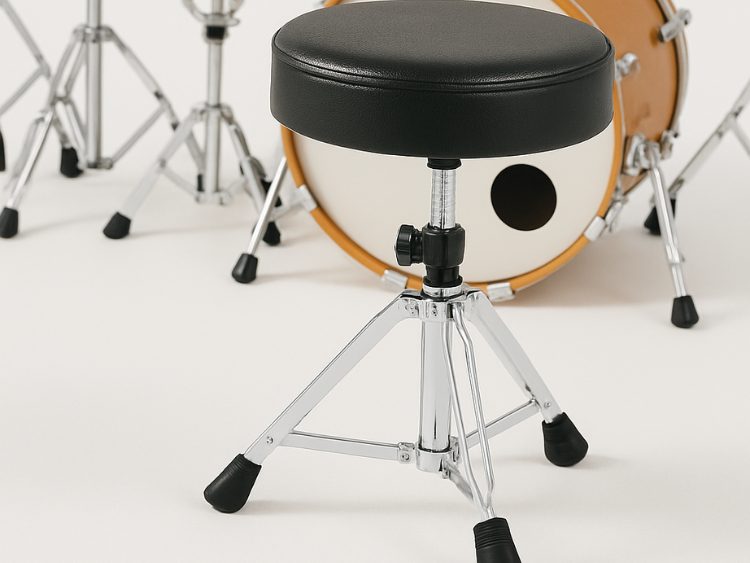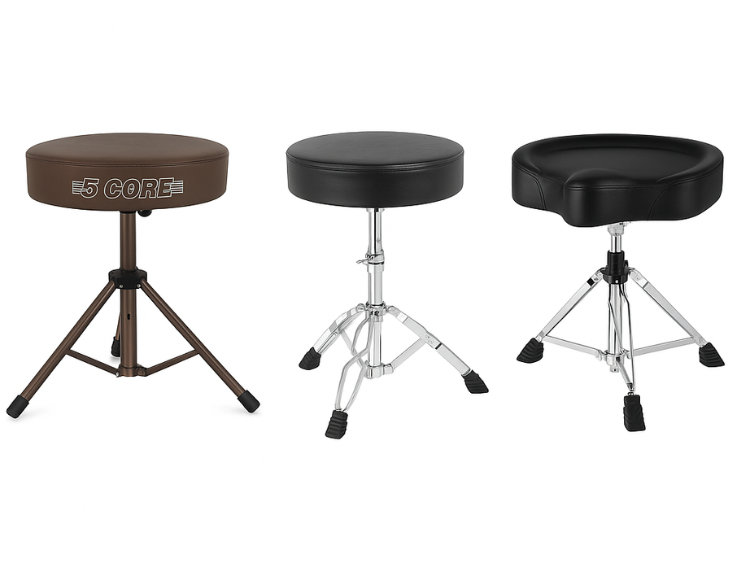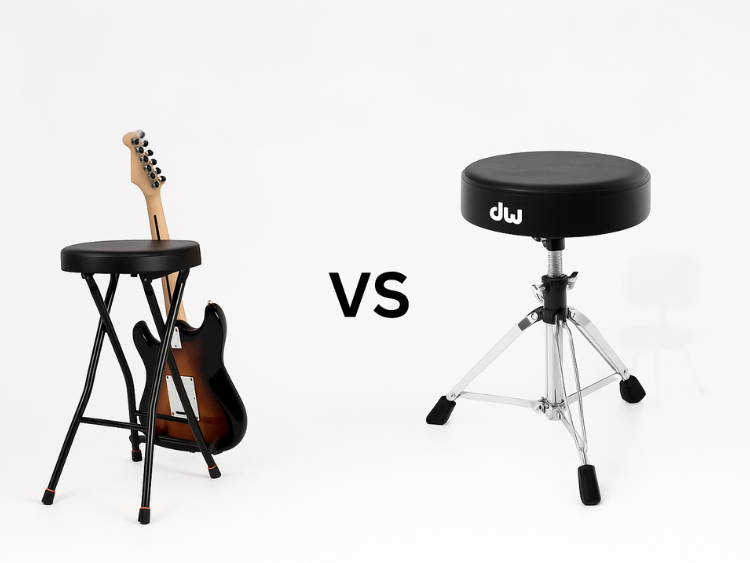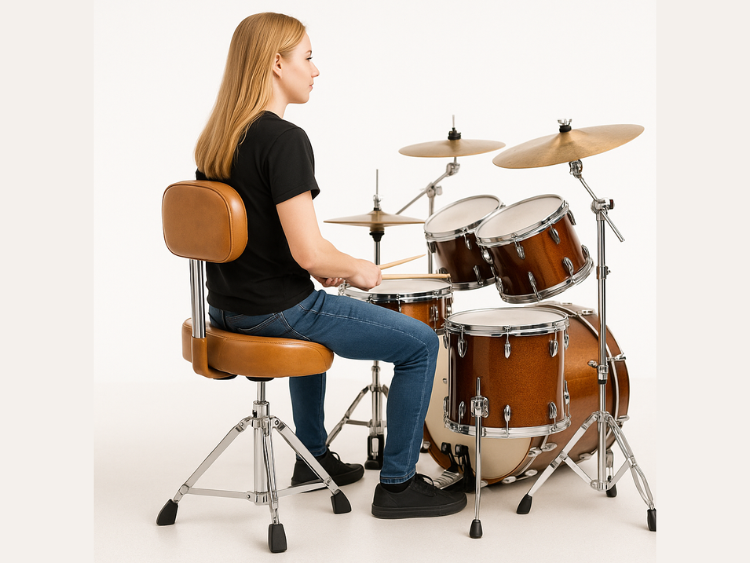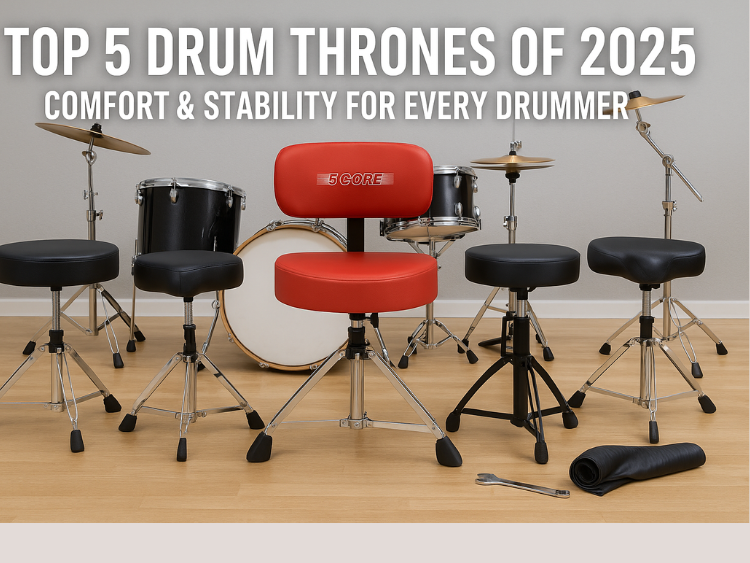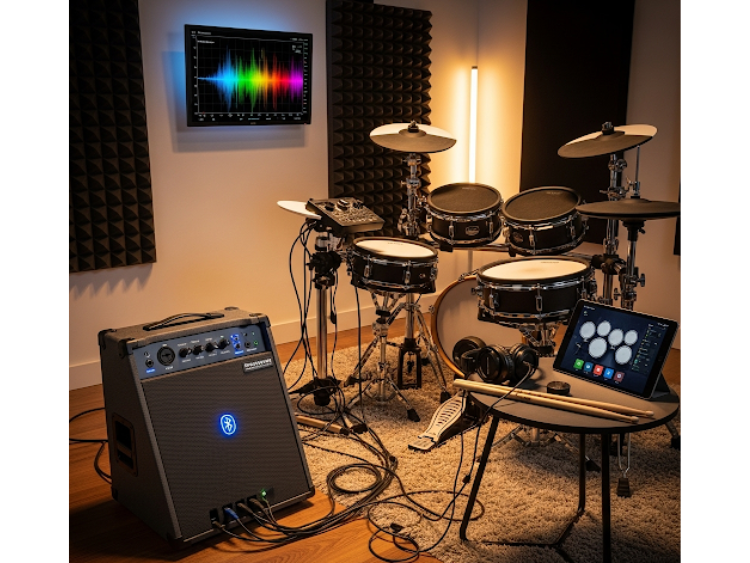Stage Setup Checklist for Drummers in 2025
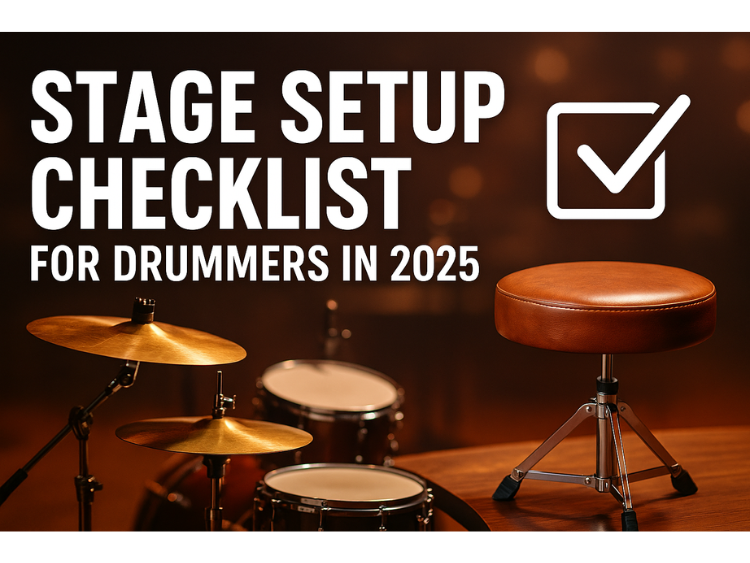
Connecting your drum kit to the show stage in 2025 involves more than pinning stands and securing heads; it is making a reliable, ergonomic, and high-quality sounding setup that will support your performance till the final build-up! Cable management to acoustics on stages, each stage seems to have a vocabulary, and whatever you play affects how it comes out. According to Room Acoustics research, good stage and sound design is also a major factor in making it sound nice and minimising feedback, so you would be very efficient in your set-up and look professional.
Expert Tip from the Road: “The fastest way to lose focus mid-show is fighting your gear. Dial in your throne height and mic positions before the crowd walks in, and you’ll thank yourself later,” says Jason Miller, touring drummer for multiple U.S. rock and country acts.
Your Complete Stage Setup Guide
Here’s the ultimate checklist to make sure you’re ready to play your best at every gig.
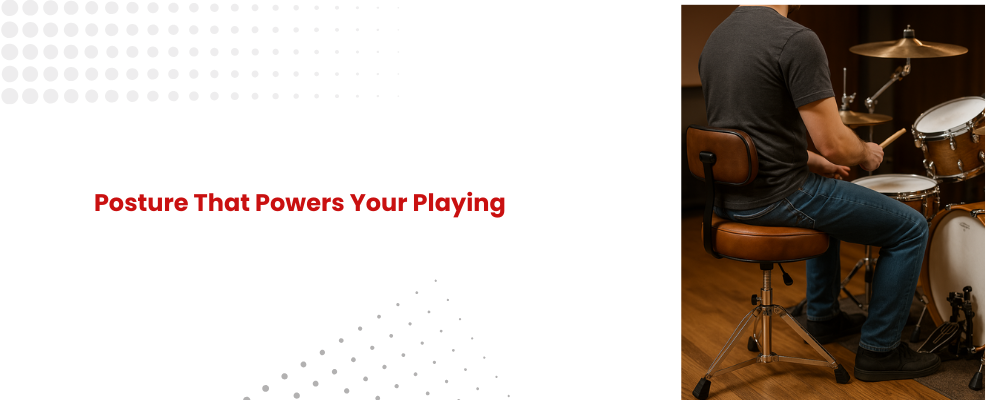
Drum Throne & Seat Positioning
You are anchored in your throne. In case it becomes unreliable or unpleasant, then everything will be more difficult. Adjust height such that your legs are at the point where your thighs are slightly more than parallel to the floor. And keep your feet in a natural position, neither stretched nor otherwise stiff, on the pedals.
A cushion-covered, adaptable throne allows one to sit in good posture that eliminates fatigue when in between longer sets. In case you have consecutive gigs and back-to-back performances, a throne with backrest support should be taken into consideration.
Pro Tip: Mark your preferred height with tape so you can set it up quickly every time.
Drum Kit Layout
The drummers have been known to have their own favorite positioning of the drums, yet the aim is unaltered as to access all the drums and cymbals easily and without bending. Your snare must always be centred between your legs and your toms aligned so that rolling is easy, and cymbals should not be too high as to make your shoulders go up.
Pro Tip: Use memory locks on stands so you can rebuild your kit exactly the same way at each venue.
Hardware Stability Check
Before soundcheck, make sure all stand joints, pedal screws, and clamps are tight. If they’re loose, your gear might move while you play and cause problems or even damage.
Stands with double legs and rubber feet stay steady, even on slippery stages. Also, check that your hi-hat clutch is tight—it’s one of the most common things to come loose during a show.
Cymbal Setup
Your cymbals should be easy to hit without straining your arms. Don’t place them too high, as it can make your shoulders and arms tired. Always use cymbal felts and sleeves to stop metal parts from rubbing together.
Pro Tip: Keep extra felts in your stick bag. If one goes missing before a show, your cymbals might buzz or get damaged.
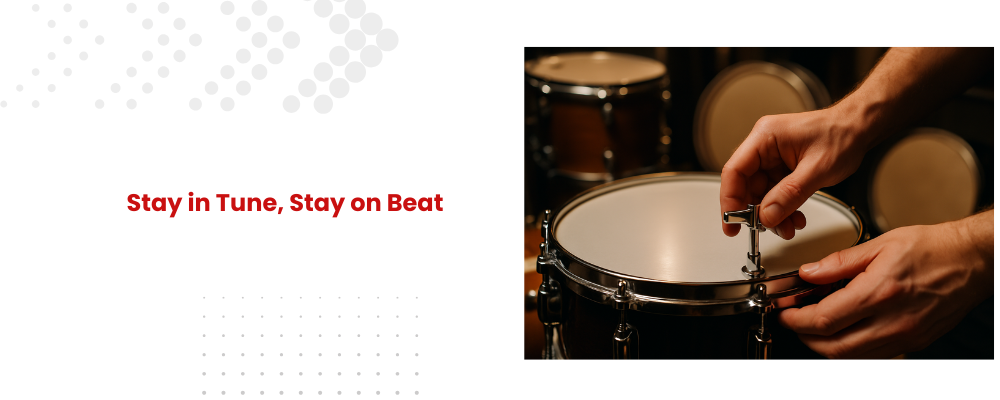
Drum Tuning & Head Check
The sound of your drums will vary according to the venue. Make them clear, balanced, and ring well. Make sure you always carry a drum key around, and make sure the key is tight before every show.
You will have worn or old drum heads that make your sound flat and difficult to tune. Have backup snare, toms, and bass heads on hand so that you are always prepared.
Pro Tip: Pre-stretch new heads before a gig to prevent mid-set detuning.
Mic Placement
If you’re putting mics on your drum kit, the right placement is important for a good, balanced sound. For most setups:
Put the kick drum mic slightly inside the hole for a strong, punchy sound.
Angle the snare mic toward the middle of the drumhead.
Place overhead mics so they pick up the whole kit evenly.
Pro Tip: After soundcheck, mark mic stand spots with tape so you can quickly put them back if they get moved.
Monitor Mix
Even the best drummers will struggle if they can't hear themselves. Blow the sound engineer the drums and the main instruments (the bass, the guitar, the vocals) sound good.
Pro Tip: If you can, use in-ear monitors. They give you the same sound at every stage and also protect your ears.
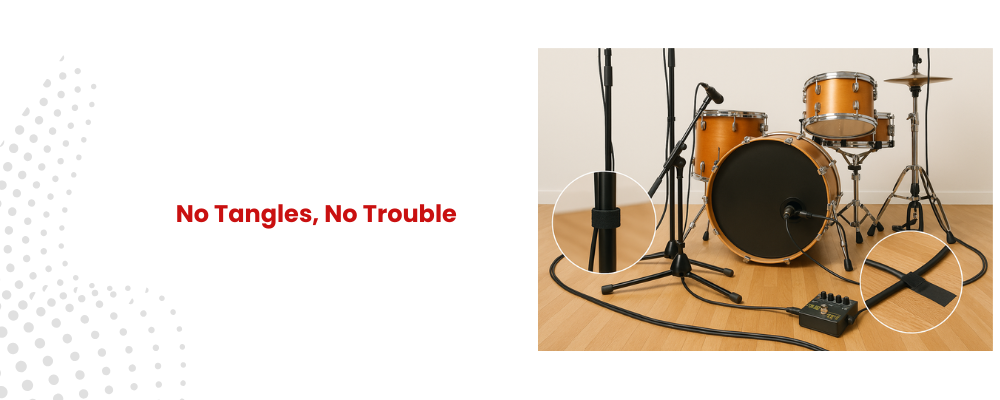
Cable Management
Messy cables can make people trip, unplug mics, or cause noise. Run them behind stands and fix them with tape or Velcro ties. Keep pedal cables away from where people walk.
Pro Tip: Use different colors for your cables so it’s easy to find and fix problems during a show.
Soundcheck Routine
A proper soundcheck is more than hitting each drum—it’s about playing a short piece that uses your full kit. This helps the engineer balance levels and spot issues with mics or monitors.
Pro Tip: Start soft, build to loud, then play at performance volume so the engineer can balance dynamics.
Venue-Specific Adjustments
Every stage is different. Smaller venues may require a more compact kit layout, while large festival stages might need extra mics and longer cable runs. Always allow extra time to adapt.
Pro Tip: Arrive early to walk the stage and note possible hazards, power outlets, and soundboard location.
Final Thoughts
The order of your stages is a pedestal for your live performance. When one is set up in a quality, consistent way, the distraction is reduced, comfort is enhanced, and focus is better on the thing one is playing. The latest equipment the drummer can get his or her hands on, ergonomics, and monitoring solutions make any gig a piece of cake in 2025. Just add these items to your checklist for your pre-show routine, and you will go on stage confident and ready.
If you’re looking to upgrade your throne, hardware, or accessories, check out the latest drum gear built for stability, comfort, and performance.
